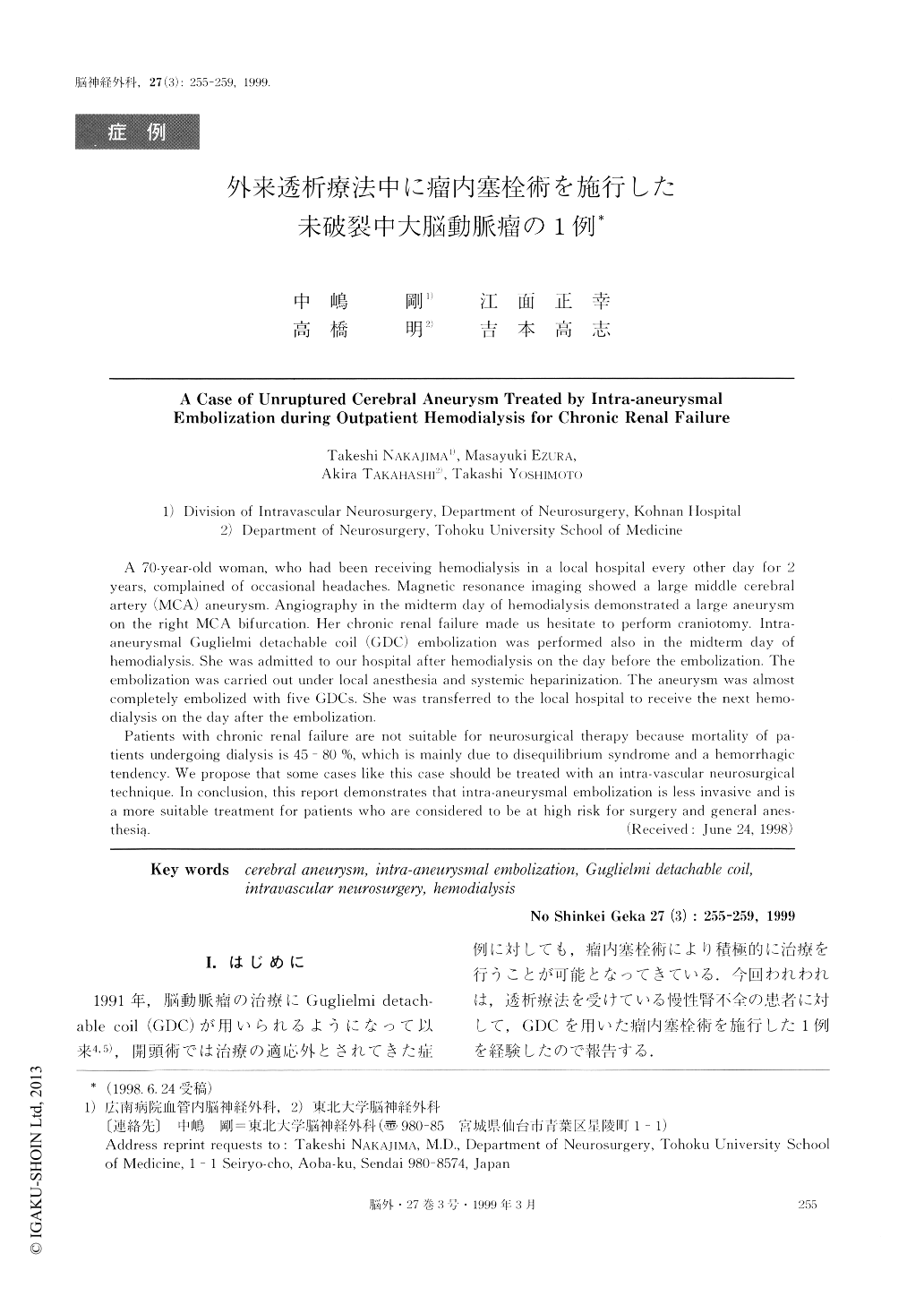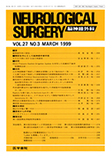Japanese
English
- 有料閲覧
- Abstract 文献概要
- 1ページ目 Look Inside
I.はじめに
1991年,脳動脈瘤の治療にGugliemi detach-able coil(GDC)が用いられるようになって以来4,5),開頭術では治療の適応外とされてきた症例に対しても,瘤内塞栓術により積極的に治療を行うことが可能となってきている.今回われわれは,透析療法を受けている慢性腎不全の患者に対して,GDCを用いた瘤内塞栓術を施行した1例を経験したので報告する.
A 70-year-old woman, who had been receiving hemodialysis in a local hospital every other day for 2years, complained of occasional headaches. Magnetic resonance imaging showed a large middle cerebralartery (MCA) aneurysm. Angiography in the midterm day of hemodialysis demonstrated a large aneurysmon the right MCA bifurcation. Her chronic renal failure made us hesitate to perform craniotomy. Intra-aneurysmal Guglielmi detachable coil (GDC) embolization was performed also in the midterm day ofhemodialysis. She was admitted to our hospital after hemodialysis on the day before the embolization. Theembolization was carried out under local anesthesia and systemic heparinization. The aneurysm was almostcompletely embolized with five GDCs. She was transferred to the local hospital to receive the next hemo-dialysis on the day after the embolization.
Patients with chronic renal failure are not suitable for neurosurgical therapy because mortality of pa-tients undergoing dialysis is 45-80 %, which is mainly due to disequilibrium syndrome and a hemorrhagictendency. We propose that some cases like this case should be treated with an intra-vascular neurosurgicaltechnique. In conclusion, this report demonstrates that intra-aneurysmal embolization is less invasive and isa more suitable treatment for patients who are considered to be at high risk for surgery and general anes-thesia.

Copyright © 1999, Igaku-Shoin Ltd. All rights reserved.


